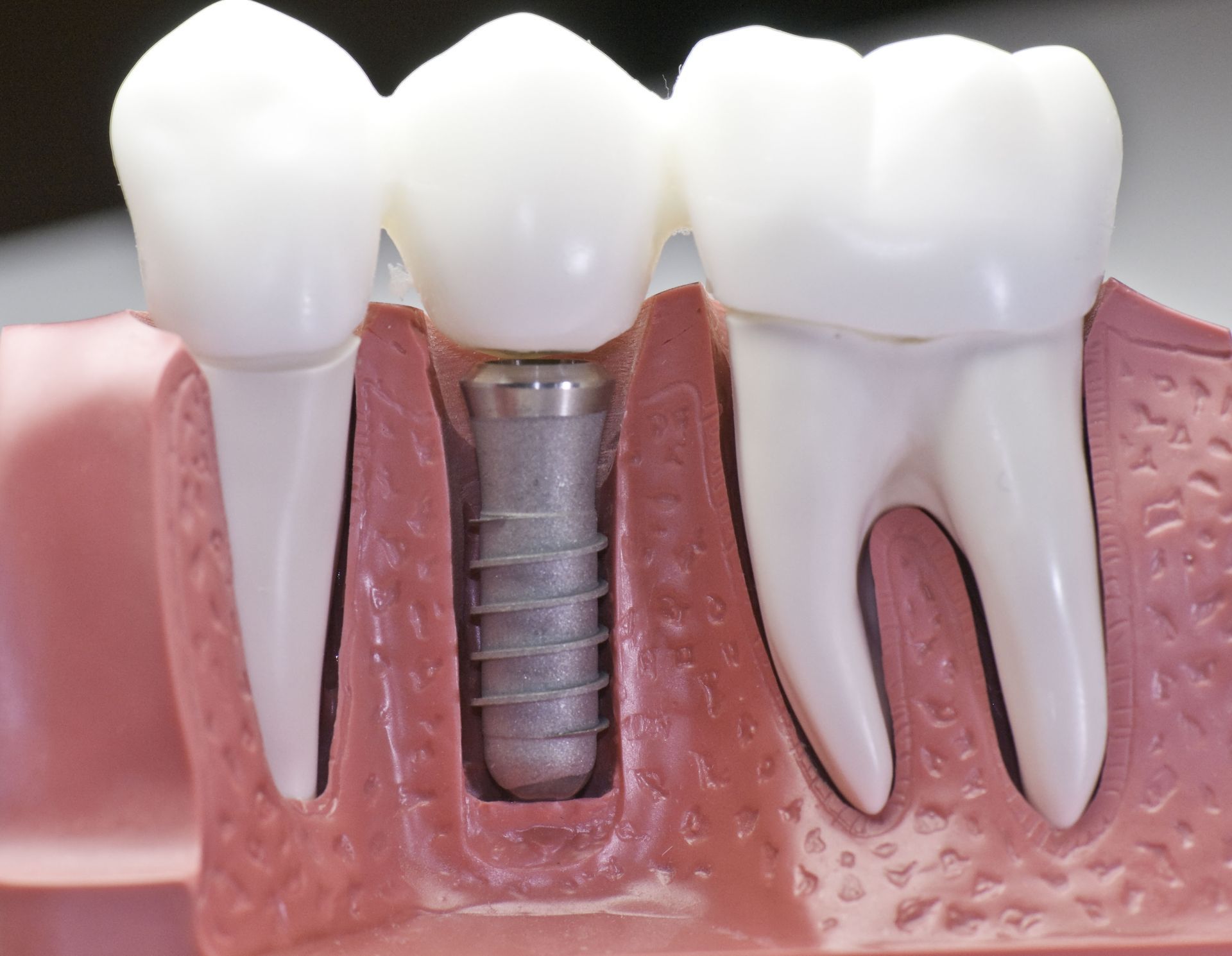October 7, 2025
The modern era of dentistry has transformed the way tooth loss is addressed, offering solutions that restore both function and appearance. Among these options, dental implants have emerged as the premier choice, surpassing traditional methods such as dentures and bridges. Patients increasingly seek implants not only for their natural look and feel but also for their durability and long-term benefits to oral health. As technology evolves and awareness grows, dental implants continue to solidify their position as the preferred method for tooth replacement.
Understanding Dental Implants
Dental implants are artificial tooth roots, typically crafted from titanium, that provide a stable foundation for replacement teeth. They integrate with the jawbone to support crowns, bridges, or dentures, effectively mimicking the structure and function of natural teeth. Composed of three main parts—the implant post, abutment, and crown—dental implants offer seamless functionality, helping patients regain normal chewing abilities and enhancing overall oral health.
Modern implant materials are highly biocompatible, ensuring long-term durability. Surgical techniques have advanced to the point where procedures are highly precise, reducing complications and increasing success rates. Each implant is customized to fit the patient’s unique anatomy, providing optimal comfort, function, and aesthetics. This individualized approach ensures that dental implants remain the closest alternative to natural teeth in both look and performance.
The Evolution of Tooth Replacement
Tooth replacement methods have evolved dramatically over centuries, from primitive solutions using animal bones or shells to early dentures and bridges. The discovery of titanium’s unique properties in the 1960s enabled the development of modern dental implants. This advancement marked a turning point, allowing for tooth replacements that are not only long-lasting but also visually and functionally superior.
Each breakthrough in dental technology has contributed to the refinement of implants, addressing challenges such as compatibility, deterioration, and comfort. Today, dental implants offer sustainable solutions that align seamlessly with natural dental structures. Their evolution highlights the dedication of the dental community to providing effective, long-term oral health solutions.
Types of Dental Implants
Dental implants are available in several types, designed to accommodate different jawbone structures and patient needs. The most common are endosteal and subperiosteal implants. Endosteal implants are surgically placed directly into the jawbone, offering a strong foundation for a crown, bridge, or denture. Subperiosteal implants rest on top of the jawbone beneath the gum line and are ideal for patients with insufficient bone height.
The choice of implant type depends on bone density, health conditions, and personal preference. Endosteal implants are favored for their robust integration and longevity, while subperiosteal implants provide alternatives for patients who may not be candidates for extensive surgical procedures. Advances in technology also allow for mini-implants and temporary solutions, enabling dentists to create highly personalized treatment plans tailored to each patient’s oral health requirements.
Comparing Dental Implants with Other Options
Dental implants consistently outperform dentures and bridges in terms of stability, durability, and aesthetics. Unlike dentures, which can shift or slip, implants remain securely anchored in the jawbone. Unlike bridges, which require modification of adjacent teeth, implants function independently, preserving surrounding teeth and preventing bone loss. This unique ability to integrate with the jawbone is critical for long-term oral health and sets implants apart as the superior choice.
Dentures may offer an immediate and less expensive solution, but they require regular maintenance and do not prevent jawbone deterioration. Bridges, while permanent, can compromise neighboring teeth and increase the risk of decay. Dental implants provide the closest approximation to natural teeth, both in function and appearance. According to Science Daily, a recent study found single-tooth dental implants can stay fully functional for almost 40 years, demonstrating their remarkable longevity and reliability.
The Dental Implant Procedure
Receiving a dental implant involves a multi-step process designed to ensure optimal results. The journey begins with a comprehensive evaluation of oral health, jawbone structure, and gum condition. Patients lacking sufficient bone may require bone grafting to support the implant. Once ready, the treatment plan outlines each phase, from surgical placement to the attachment of the crown.
The implant post is surgically anchored into the jawbone under local anesthesia. A healing period, known as osseointegration, allows the implant to fuse with the bone, ensuring stability. Temporary crowns may be used during this time to maintain function and appearance. Once fully integrated, the abutment and permanent crown are placed, completing the restoration. Proper post-operative care, including diligent oral hygiene and routine follow-ups, is essential for maintaining implant longevity and function.
Patients considering dental implants should also understand that the process is highly customizable. Each implant is tailored to the patient’s specific dental anatomy and aesthetic goals, ensuring not only a functional outcome but a natural-looking result that complements the surrounding teeth.
Benefits of Dental Implants
Dental implants are highly durable and can last a lifetime with proper care. Their integration with the jawbone provides unmatched stability, and the use of biocompatible materials like titanium ensures resilience under daily use. Unlike bridges or dentures, implants rarely require replacement or adjustment, making them a sound long-term investment in oral health.
Dental implants promote oral health by preserving jawbone density and preventing the deterioration that occurs with missing teeth. Unlike traditional bridges, implants do not compromise adjacent teeth, and unlike dentures, they maintain natural bone stimulation. Stable implants also reduce plaque buildup and facilitate better overall oral hygiene, contributing to healthier gums and teeth.
Implants are designed to replicate natural teeth in appearance and function. Customized to match each patient’s dental anatomy, they restore biting, chewing, and speaking abilities without the discomfort of removable alternatives. The natural aesthetic enhances self-confidence, while their robust functionality supports a normal lifestyle, including the ability to enjoy a varied diet.
By acting as an artificial root, dental implants preserve jawbone structure and prevent facial changes associated with tooth loss. Maintaining bone density helps retain the natural shape of the face and prevents misalignment of remaining teeth. This dual benefit of health and appearance reinforces the comprehensive value of implants as a tooth replacement solution.
Dental implants boast success rates between 90–95%, thanks to advances in surgical techniques, precise planning, and careful patient selection. High success rates are reflected in improved patient satisfaction, quality of life, and long-term oral functionality. Even minor complications can be efficiently managed, reinforcing the reliability of implants as a transformative dental solution.
Cost Considerations and Value
While the initial cost of dental implants may be higher than dentures or bridges, their long-term value outweighs the expense. Implants require minimal maintenance, prevent additional dental issues, and last significantly longer than alternatives. This durability reduces the need for repeated procedures and associated costs, making implants a cost-effective solution over a patient’s lifetime.
Investing in dental implants is not just a financial decision but a commitment to long-term oral health and quality of life. Patients often find that the benefits of confidence, comfort, and overall health justify the initial investment, making implants the preferred choice for those seeking permanent, reliable tooth replacement.
Dental implants have redefined tooth replacement by combining durability, natural appearance, functionality, and health benefits. Their ability to preserve jawbone, support oral health, and provide long-lasting results makes them the gold standard in restorative dentistry. For individuals seeking a permanent solution to tooth loss, dental implants offer unparalleled advantages that extend beyond aesthetics, encompassing holistic oral wellness.
For expert guidance and personalized care in dental implant solutions, contact Distinctive Dental Services, PA and take the first step toward restoring your smile with confidence.






